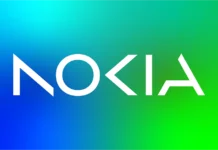Plus Samsung’s challenge, the US’s late, late majority, more Android permissions woes, the wearables puzzle, and more
Five things to know about Siri and Google Now’s growing intelligence
Lawrence Flynn is CEO of Artificial Solutions, which makes natural language processing systems:
As the race for the ultimate personal assistant heats up, attention is turning towards who can deliver the most personalized experience. While Scarlett Johansson’s portrayal of Samantha in the movie ‘Her’ might still be closer to science fiction, today’s sophisticated assistants already delivering far more personalization than you might realize.
Here are five things you need to know about implicit personalization and why it’s just a step closer to the ultimate personal assistant.
…Another example might be that the assistant has learnt that you always open up the Dominos Pizza app whenever you watch action movies, so next time you ask it to play the latest Hollywood blockbuster she could prompt “and shall I order your pizza too?”
Why is it that the canonical “proof of ability” for any digital device or system is ordering a pizza?
Scientist untangles mystery of jumbled headphones
[Aston University’s Professor Robert] Matthews’ years of study suggest that clipping the two earbuds together, then attaching them to the end near the audio jack to form a loop, will cause a tenfold reduction in knot formation.
“First, by forming the loop you’ve effectively reduced the length of string able to explore the 3D space by 50 per cent, which makes a big difference.” Matthews said. “Second, you’ve also eliminated the two ends, which are the prime movers of knot formation.”
That’s terrif– did you say years of study?
Smartphone truths and Samsung’s inevitable decline stratechery
Ben Thompson:
Samsung had built up a healthy high-end business by:
• Being available on nearly every carrier
• Pioneering the large-screen segment
• Producing hardware that was meaningfully superior to low-end offerings
All three of these factors either have or are in the process of disappearing:
• After a two-year lull, Apple has greatly expanded iPhone availability worldwide
• As noted above, the gap between low and high-end hardware is disappearing
• Multiple manufacturers have moved into the large-screen segment, with the iPhone coming soon
…Ultimately, though, Samsung’s fundamental problem is that they have no software-based differentiation, which means in the long run all they can do is compete on price. Perhaps they should ask HP or Dell how that goes.
In fact, it turns out that smartphones really are just like PCs: it’s the hardware maker with its own operating system that is dominating profits, while everyone else eats themselves alive to the benefit of their software master.
Tim Cook’s Apple takes shape >> WSJ
“Steve was a wartime CEO, while Tim is a peacetime CEO,” said one former employee.
…Mr. Jobs’s repudiations bruised feelings while making sure the company stayed focused on a few projects. Under Mr. Cook, current and former employees say Apple may be spreading itself too thin, pursuing too many ideas and compromising the “laser focus” that Mr. Jobs used to create the iMac, iPhone and iPad.
“It was Steve’s job to say no,” one of these people said. “Tim is not as comfortable doing that.”
A person close to Apple said it is natural that a bigger Apple would broaden its portfolio. “I think Steve would have been saying yes to more things if he were still running the company,” said this person, who noted that while Mr. Jobs was an intuitive decision maker, knowing what he liked and didn’t like immediately, his snap decisions sometimes led to errors in judgment. Mr. Cook is more thoughtful and will take extra time to “minimize mistakes.”
…The [$3.2bn Beats] deal raises the question of whether Mr. Jobs would have done the same.
Mr. Cook says he doesn’t ask What Would Jobs Do. He says that Mr. Jobs told him before he died to never ask that question.
“I’ve abided by that. I think he did that because I think he wanted to relieve what might have been an enormous burden on me,” said Mr. Cook in an interview at the time of the Beats deal. “Because of that, I’ve always been able to kind of block that question.”
(Subscription required.) What this does capture is that Apple is becoming, internally, a gentler company – which, quite separately, is happening at Google too.
App permissions? Pah! Rogue Android soft can ‘place phone calls at will’ >> The Register
Researchers at German security firm Curesec have identified bugs present in most versions of Android that can allow malicious applications to place phone calls, even when they lack the necessary permissions.
By exploiting these vulnerabilities, rogue apps can get up to such mischief as surreptitiously dialing out to expensive toll services, potentially racking up big charges on unsuspecting customers’ phone bills.
The same exploits can also be used to hang up outgoing calls and to send Unstructured Supplementary Service Data (USSD) codes – special, carrier-specific codes that can be used for such things as enabling call forwarding, blocking SIM cards, changing caller anonymization options, and so on.
Even security programs that can revoke permissions from apps provide no protection from these bugs, because the corresponding exploits circumvent the Android permissions system altogether.
Potentially affects 87% of devices out there, judging by Google’s latest numbers. It’s reminiscent of the trojan programs from the dialup era, which used to infect PCs and call far-off countries for fun and profit.
Late late majority >> Asymco
Horace Dediu, pointing out that the US now has 70% smartphone penetration among mobile phone users:
As Geoffrey Moore explained, the marketing of technology products needs to be varied as we get into different phases of the market. Innovators (first 2.5%) need to be sold on the premise of novelty itself. Early adopters (next 13.5%) seek status and exclusivity. Early majority (34%) seek acceptance and Late Majority (34%) seek pragmatic productivity. Laggards (last 16%) seek safety.
One aspect of this adoption cycle that is misunderstood is the role of pricing. The assumption is that pricing matters more as adoption increases. This is misunderstood because pricing always matters and therefore it never matters.
Second quarter 2014 earnings statement >> Samsung
Samsung offers a fulsome explanation for its expected drop in earnings, besides the appreciation of the won:
In China, channel inventory level increased due to weak seasonal demand, 3G demand declined ahead of the expected expansion of 4G LTE during the second half and intensified price competition among local players.
As Samsung maintained high level of market share (around 40%) in Europe, sell-in shipments declined due to growing pressure from channel inventory surge as weak demand continued in 2Q.
For tablets, shipments declined more than expected level due to weak overall market demand and, unlike smartphone, lack of carriers’ subsidies policy led to low replacement demand.
The demand for 5-to-6in smartphones also cannibalized the demand for 7-to-8in tablets.
Therefore, the second quarter earnings were negatively affected by substantial increase of marketing expenses from the previous quarter due to strong sell-out promotion to reduce channel inventories in addition to marketing promotions for new smartphone and tablet launch.
Notable that it’s talking about tablet replacement already when most vendors would still be looking to expand the market. The explanation about Europe boils down to “people didn’t buy as many as we’d expected”. The explanation about China seems to be that it had too many 3G phones, which lost out in a commodity price war.
LCD industry dynamics update, June 2014 >> DisplaySearch Blog
• JDI started production of 4.7″ iPhone 6 panels in April, and 5.5″ panels in May, both on Gen 5.5 lines. In June, JDI started 4.7″ production on its Gen 6 line.
• Driver IC makers received requests from panel makers for drivers for 4K tablet panels. They are developing a single-chip solution that is likely to be ready by the end of Q3’14. The 4K tablet panels have display sizes from 6.x” to 9″.
• Most TV brands are still holding to their shipment forecast for 2H’14 as production approaches the peak season of August-October. Even though the top brands have extra panel inventory, they have not indicated any intention of cutting demand.
Seems unlikely that it’s Apple seeking the 4K tablets. Plenty more of interest in the rest of the briefing, too.



















